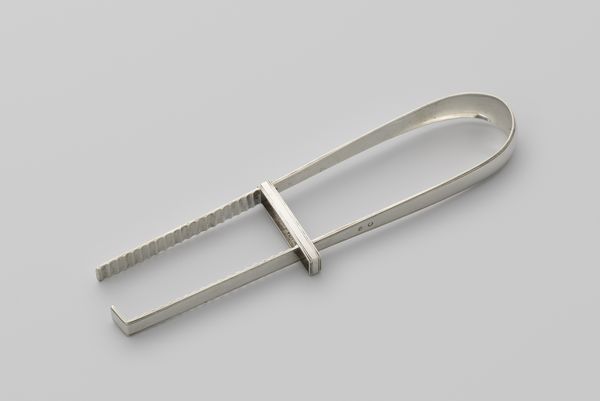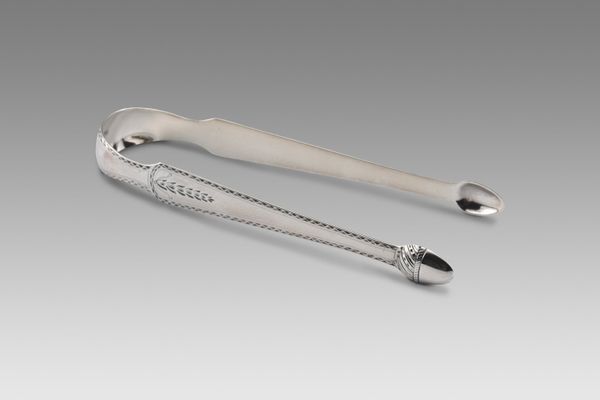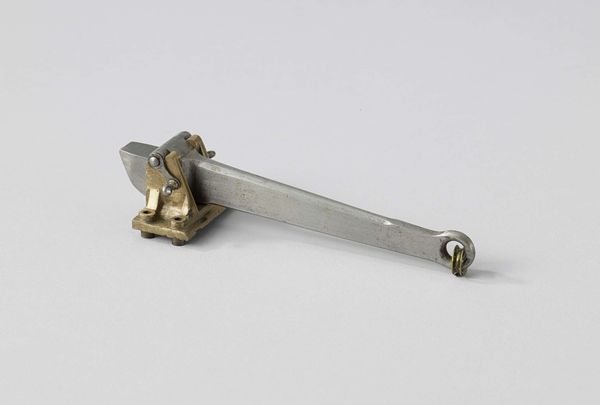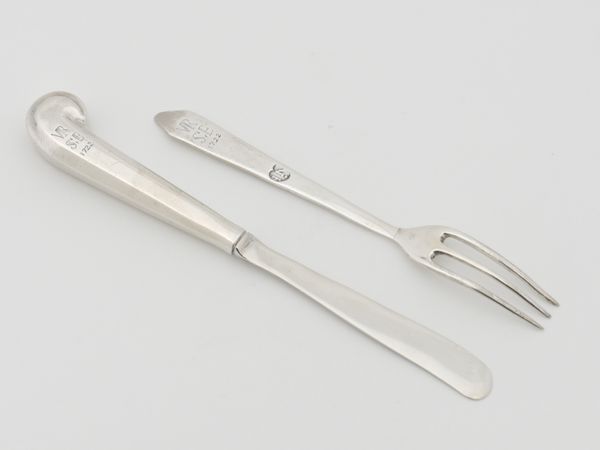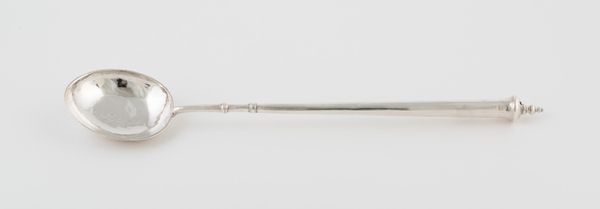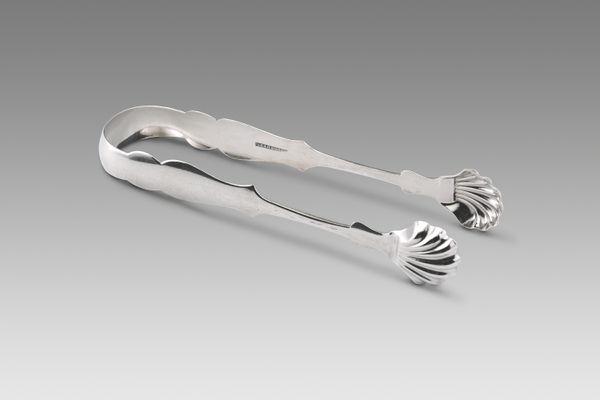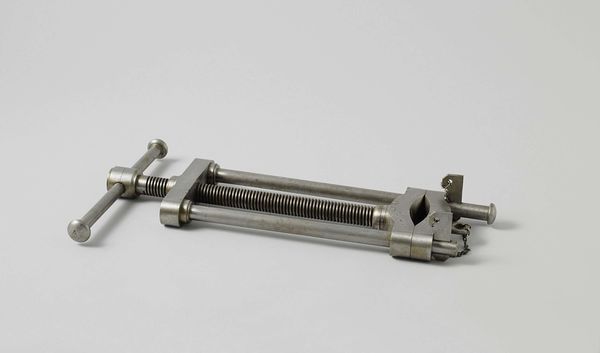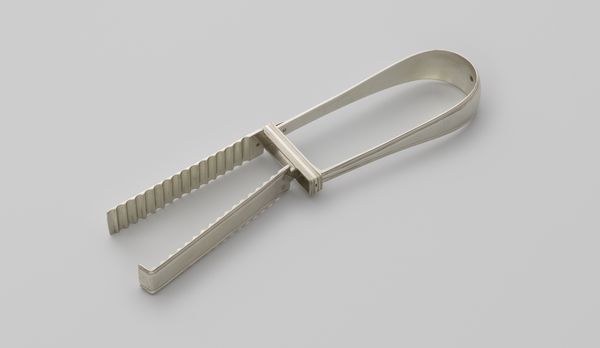
silver, metal
#
silver
#
baroque
#
metal
Dimensions: length 9.9 cm, width 3.7 cm
Copyright: Rijks Museum: Open Domain
This 'Glazenspuit' was crafted by Arnoldus van Geffen in the 18th century. It’s a silver instrument, about 10 centimeters long, its metallic sheen catching the light and reflecting a cool, detached elegance. The object consists of two slender, parallel rods joined at one end, creating a kind of tweezer. Horizontal grooves mark both rods with identical banding. The handle terminates in a rounded knob. This rigid symmetry offers a sense of balance. But it’s a deceptive balance. The rods are slightly open, creating a tension between closure and exposure. Considered structurally, this instrument speaks of precision and control. Van Geffen transforms a utilitarian object into a statement about form and function. It is a physical manifestation of the Enlightenment's emphasis on reason and order. The Glazenspuit is not merely an object; it’s a philosophical statement rendered in silver. Its meaning lies in its physical form and its capacity to evoke a sense of ordered precision.
Comments
No comments
Be the first to comment and join the conversation on the ultimate creative platform.
